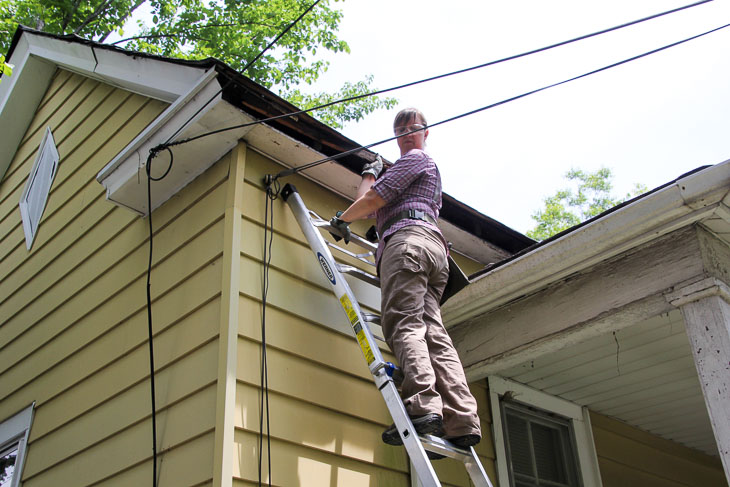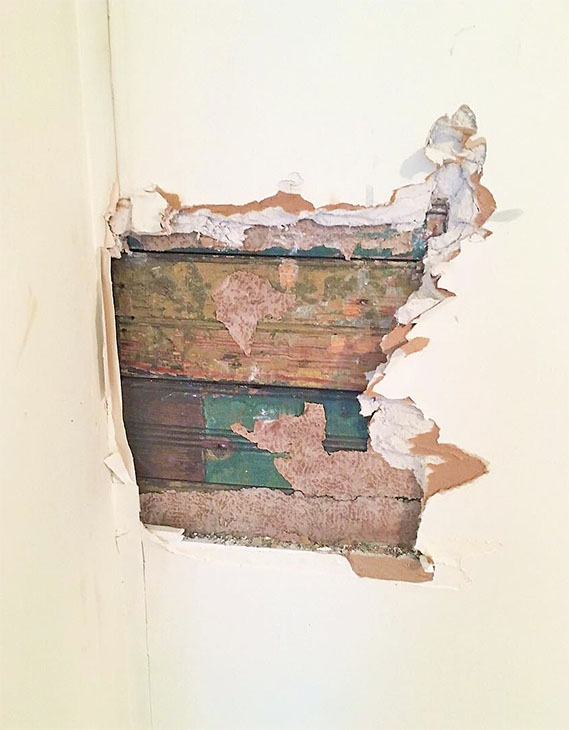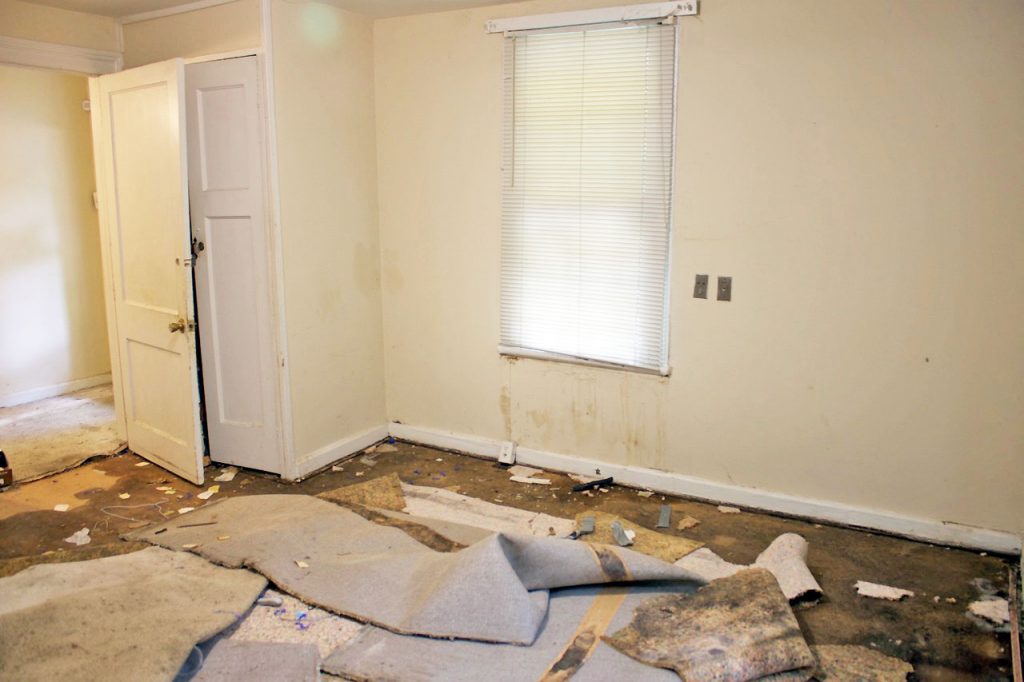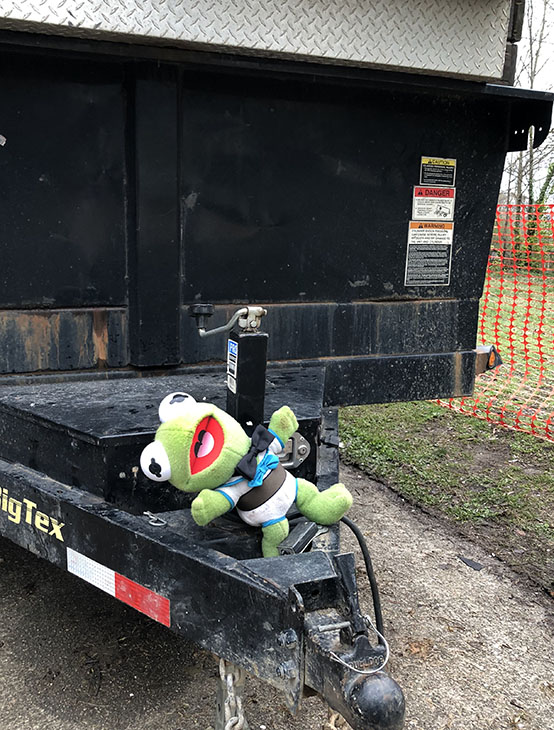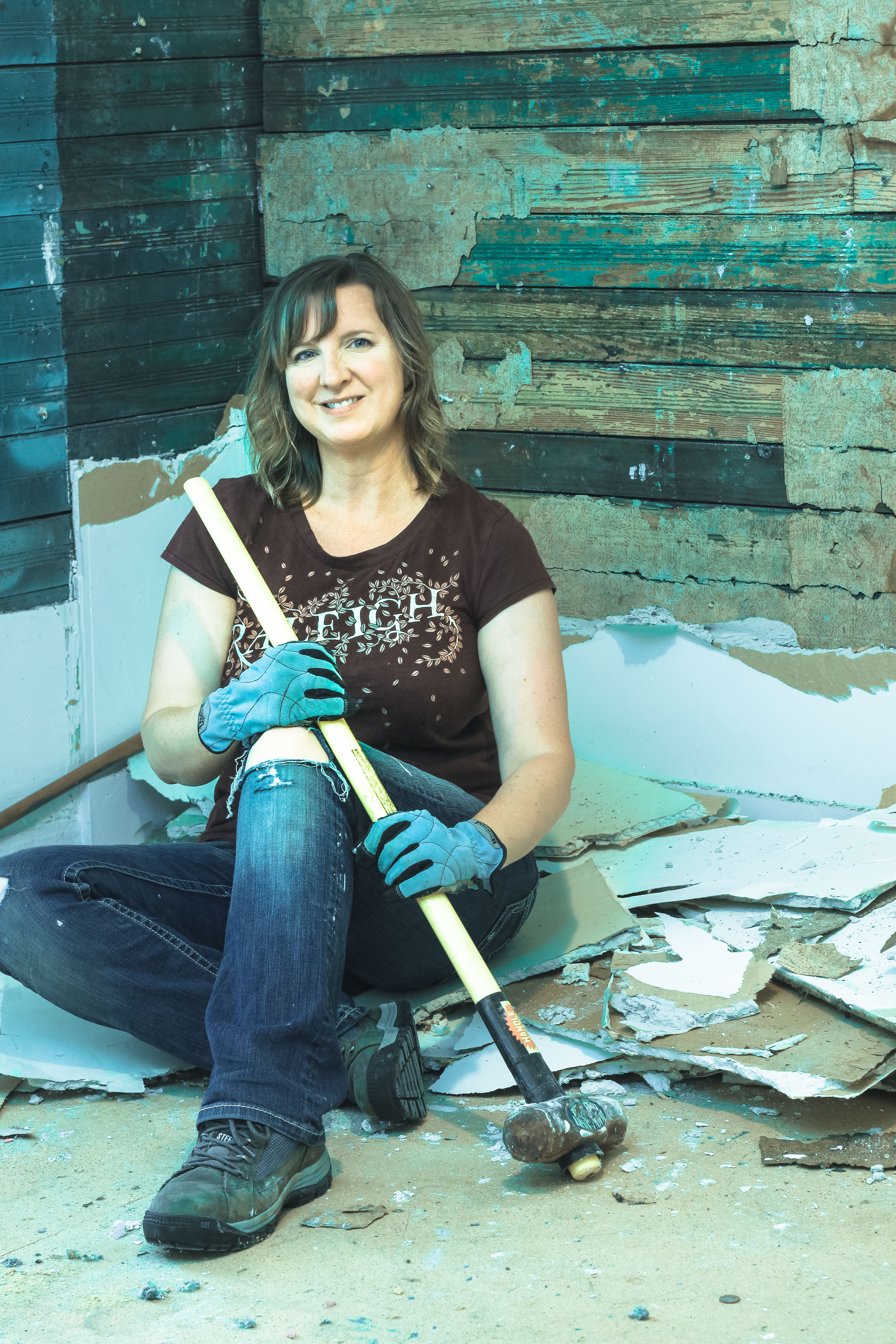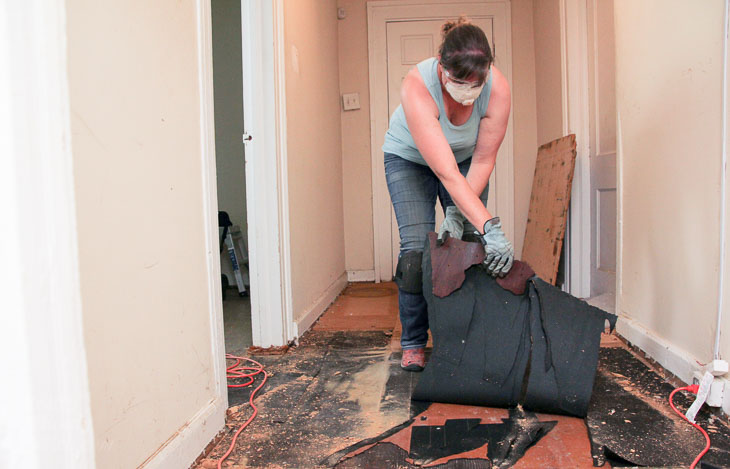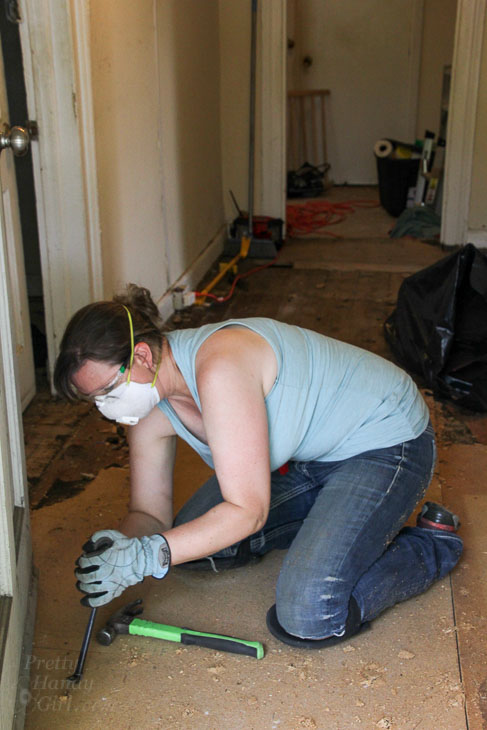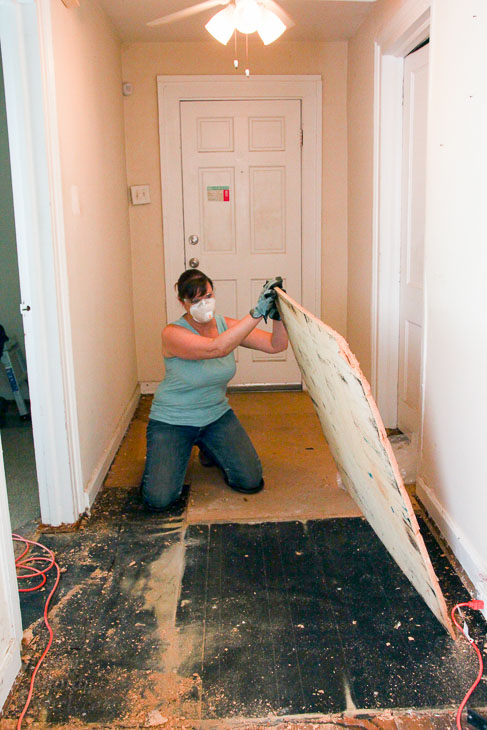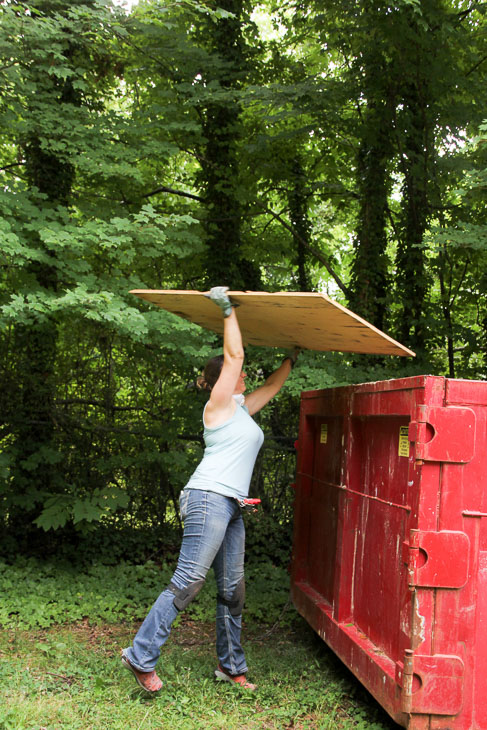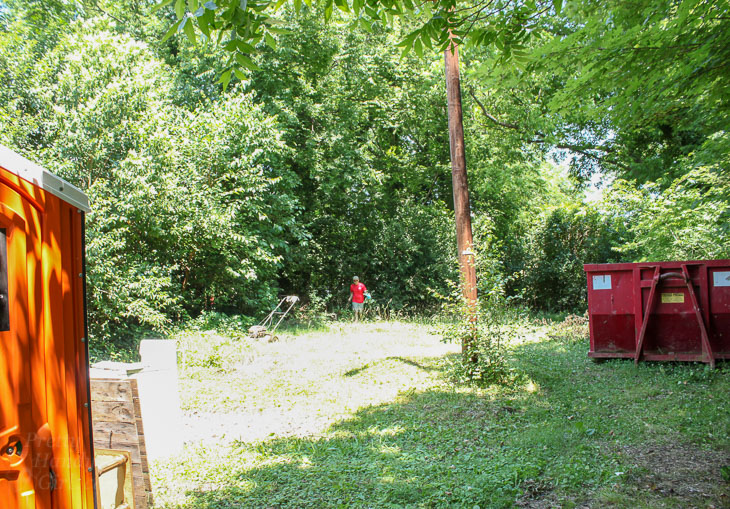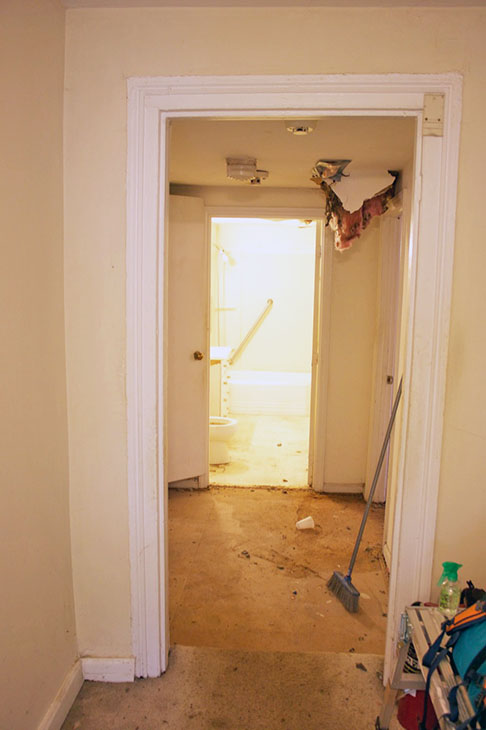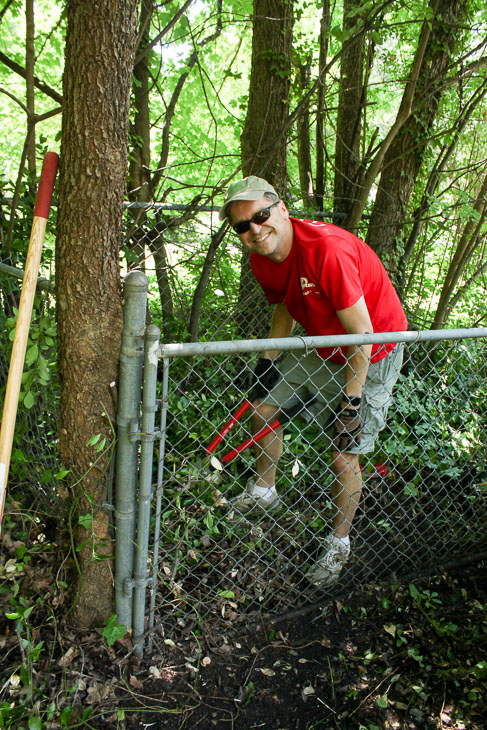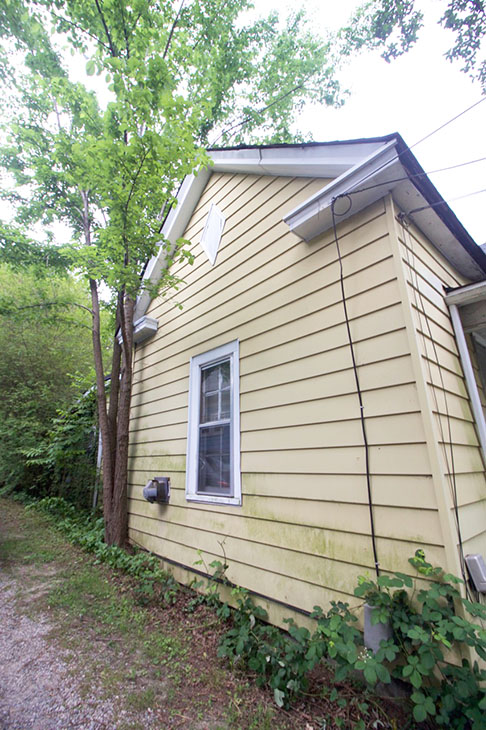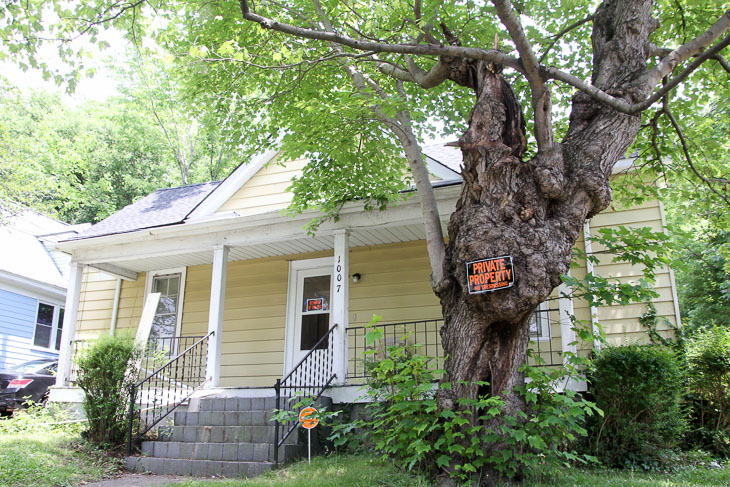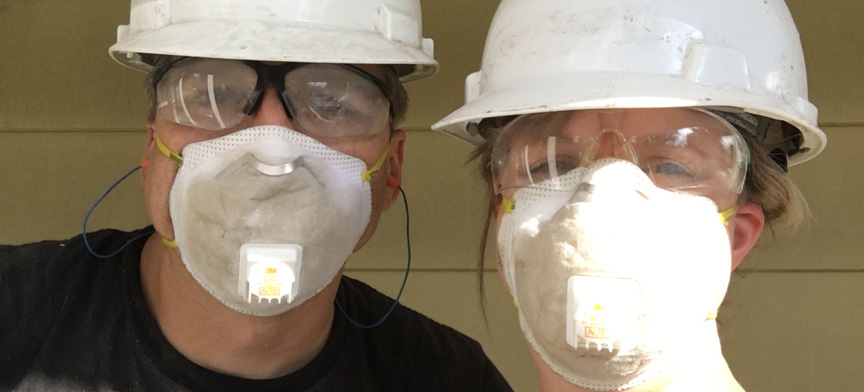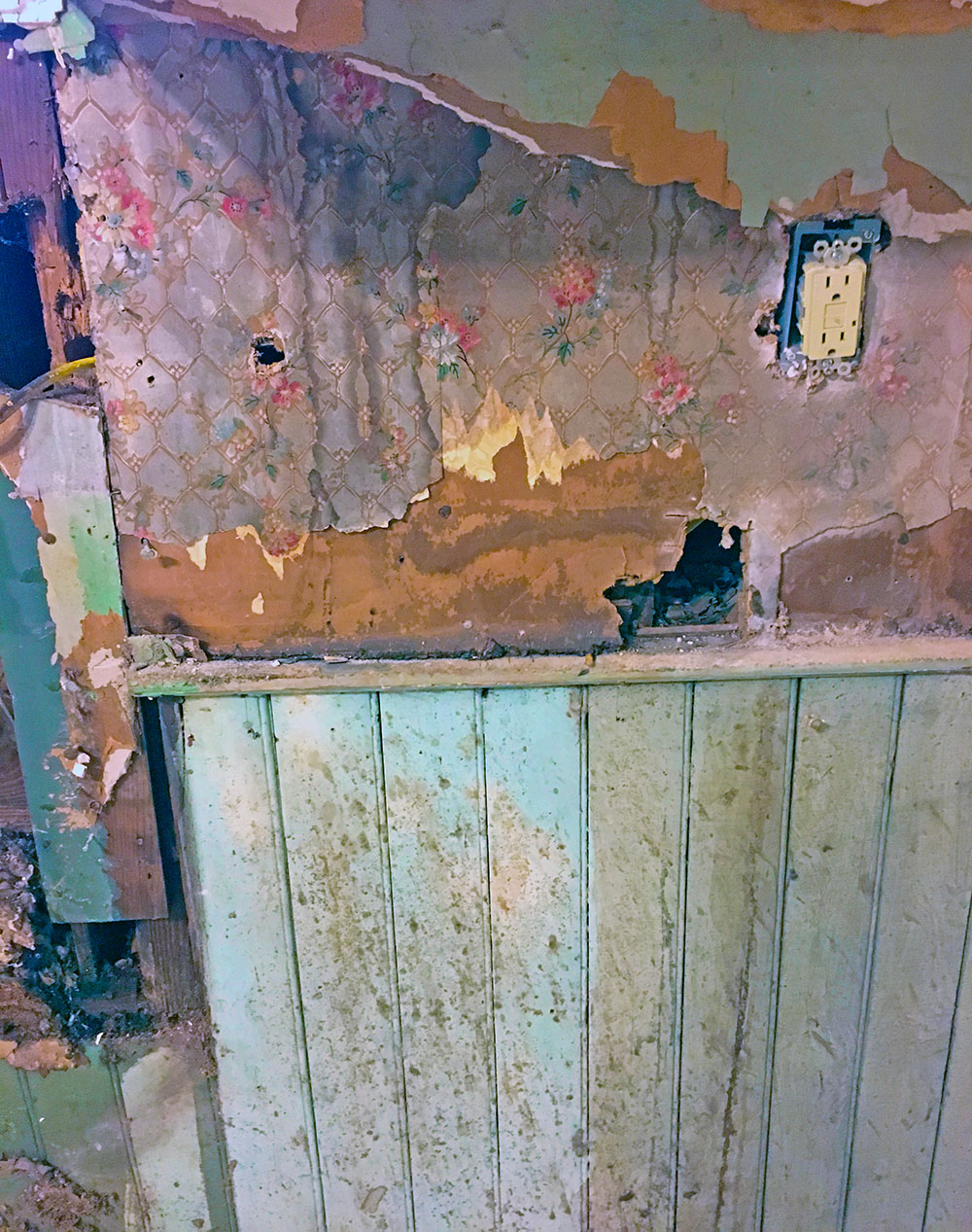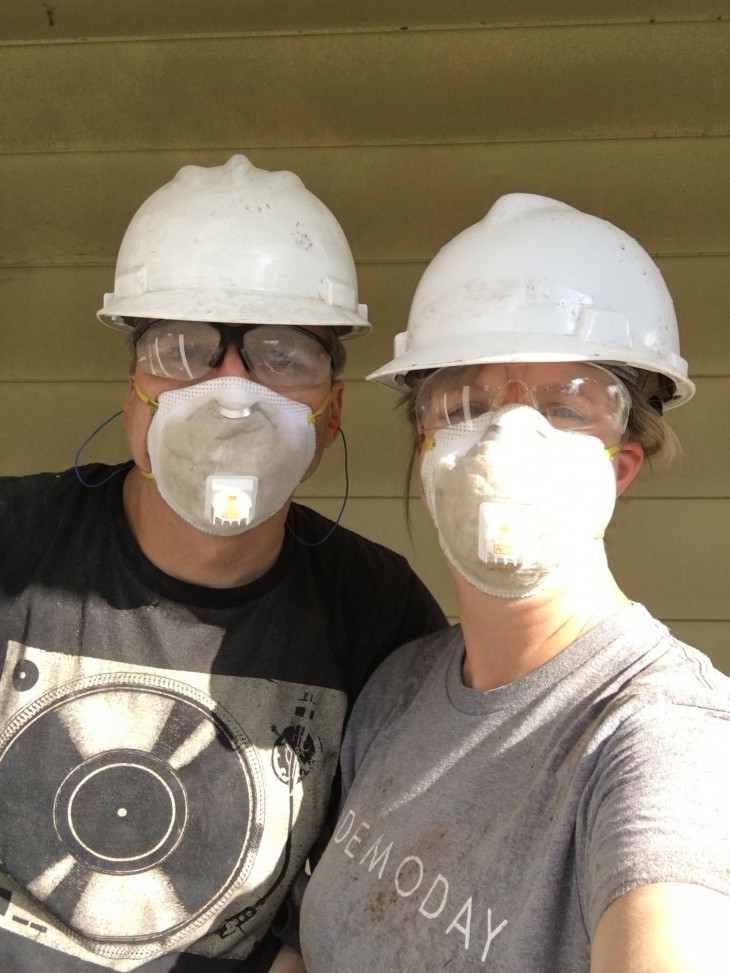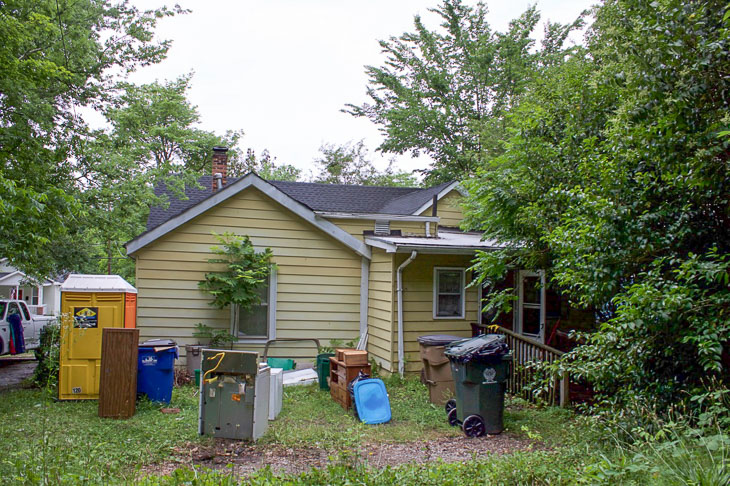
Saving Etta: Chapter 17 – Good Neighbors
This is the true story about a house built in 1900 that is in serious disrepair. It’s also the story about my journey toward becoming a general contractor and my attempt to save a home from being bulldozed. I hope you’ll follow along as I embark on a journey into the unknown perils and rewards of flipping a home in downtown Raleigh, NC.
If you are just joining the story, you may want to read all the Saving Etta chapters for more of the back story.
Be sure to follow me on Facebook and Instagram as I share live updates about this project I’m calling Saving Etta.
A special thank you to all the brands that are helping to save Etta!
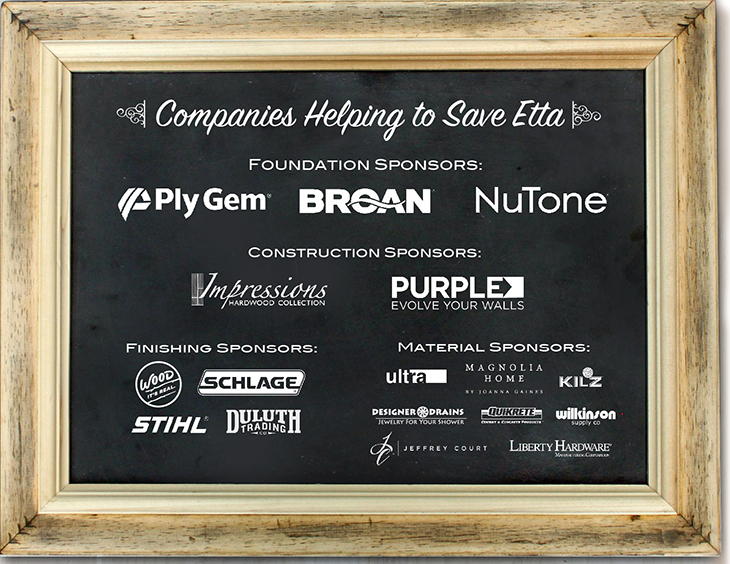
![]()
Today was the day I was determined to replace the missing fascia board on the front of the house. I was convinced that the majority of the mold in the front room was coming from this open spot. All it took was one heavy rain storm and some wind to send a torrent of rain water over the edge of the roof and back into the walls of the house.
I set up my ladder against the front of the house and looked up. A series of wires attached to the house right above my head. For a split second, I thought they were power lines, but then I remembered the electrical meter was mounted on the opposite side of the house. Plus, these cables were smaller in diameter than electrical wiring.
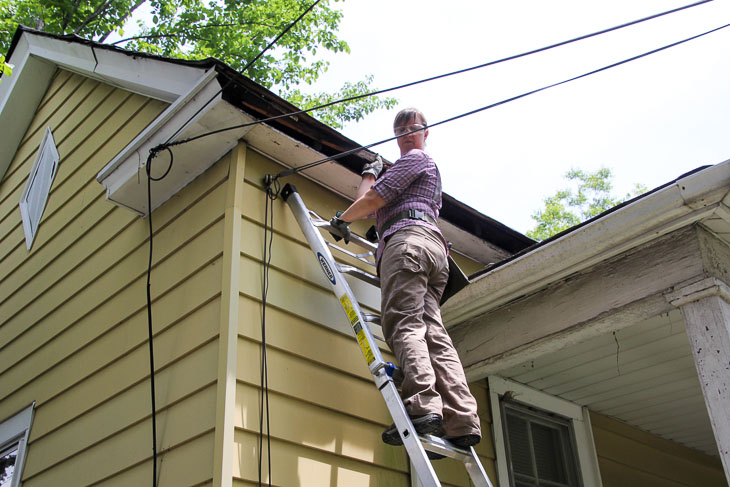
Cable line and phone line, I thought to myself.
Climbing the ladder, I ducked under the wires and swung one leg up onto the porch roof. My body and other leg followed suit and soon I was perched on top of the porch.
The morning was warm, but I knew the afternoon would bring another hot and humid day.
I assessed the condition of the remaining fascia. The board had cracked off in a jagged line, which meant I’d need to make a clean cut to piece in the new board or pull off the remaining section. Opting for the second choice, I stepped back onto the ladder and started to tug on the jagged piece. It held firm and resisted my efforts. I reached for my hammer in the loop of my tool belt. After a few minutes, the piece began to give way. One more pull with my hammer claw revealed several square nails that had held the board firm to the roof rafters.
I reached into my tool belt for a tape measure to measure the open section. My toolbelt fit snugly around my waist—I thought about the extra pounds I’d put on while sitting in front of the computer for months. Working on Etta in the hot sun would soon shed the excess fat I was carrying on my body. Carefully extending the tape measure, I tried twice to hook the end on the edge of the roof over the ladder. On try three, the tape measure held rigid enough to get an accurate measurement.
As I committed the measurement to memory, I looked at the soffit under the fascia board. A big hole had been chewed into the board, likely from a squirrel. Critters had probably been entering the attic for some time. I couldn’t ignore it, and knew I should cut out the damaged section and replace it with a solid piece while I was on the porch roof. I quickly took measurements for the damaged piece of soffit and climbed back down to the ground, then cut two boards to size. The fascia board was just over 12 feet long, while the soffit was only 18 inches long.
Grabbing a tiny circular saw, a multi-tool, and a foam kneeling pad, I climbed back onto the roof. The sun was hot now that the morning clouds burned off. It would be a blistering day for sure. I was glad I’d had the foresight to bring the foam pad for my knees. The heat was radiating off the black shingles around me.
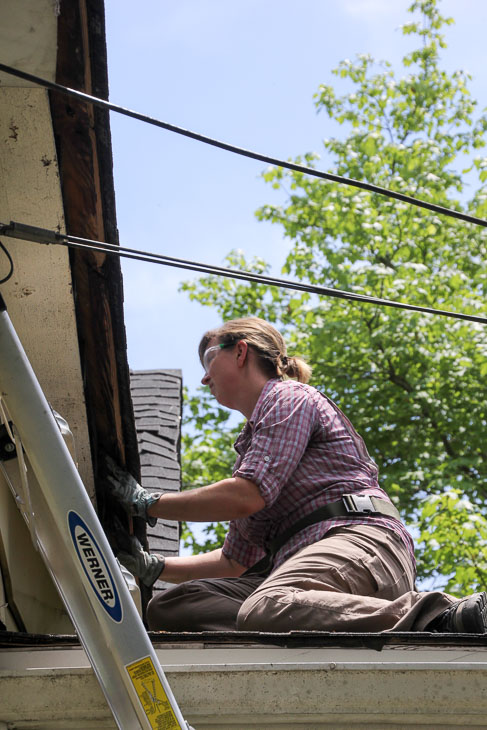
As I started to cut into the bottom of the soffit, I heard a voice below.
“Hello,” said a dark skinned man. He shielded his eyes from the sun as he looked up at me.
“Hi!” I replied.
“What are you doing?” he asked quizzically.
“I’m trying to save this old house; it was built in 1900,” I explained to him—not sure why I felt the need to tell him my entire goal for Etta.
The man— I’d later find out his name was Kevin—replied, “Cool! There are a few other houses in this neighborhood that look like this one, but most have been bulldozed to make room for bigger houses.”
“I know. That’s why I want to save this old girl.” I replied.
“Well, good luck to you. And be careful up there, it’s going to be a hot day. Do you have water with you?” Kevin asked.
“Yes, it’s in my truck, I’ll get it later,” I assured him.
Kevin waved goodbye and walked down the street as I continued to wrestle with the piece of soffit. I’d reached a point where the saw was too big to squeeze into the tight space between the soffit and the porch roof. Setting the saw aside, I switched to the multi-tool and cut into the soffit at a forty-five degree angle. It was taking a ridiculous amount of time to free the damaged piece. I wiped the sweat off my forehead and shed my button down plaid shirt revealing just my tank top. At this point I could not care less if anyone saw my love handles; it was too hot on the asphalt roof and I was desperate for a breeze to cool me off.
“I brought you water,” Kevin said from the ground.
I looked down in shock to see him standing at the bottom of the ladder with a water bottle, dripping with condensation. He climbed the ladder to hand it to me.
“Thank you! You didn’t have to do that,” I said.
Kevin waved his hand and said, “Not a big deal. I can tell you have your work cut out for you. And, I don’t want you passing out and falling off the roof.”
We both laughed, although I knew it was a possibility if I neglected to drink enough water. Kevin smiled and left me to wrestle with the soffit.
After what seemed like an hour—but was probably only 15 minutes—the board finally came free. The soffit repair should be easy; it was a small piece. However, I wasn’t sure how I was going to secure the 12′ section of fascia board by myself. I figured I’d work on the small piece first and figure out the fascia board dilemma as I worked.
My hammer hit the nails square, but they refused to sink into the old rafters. This old growth wood was no joke! No wonder Etta was still standing after 118 years. Finally I switched to pre-drilling holes and used my drill to drive screws to secure the soffit.
Once again, I had sweat on my forehead and I knew the small of my back was highlighted by a big wet bullseye of perspiration. At least the moisture was cooling me off, because it was turning out to be a hot, muggy day.
I climbed down the ladder and picked up the piece of masonite fascia. Although I knew it wasn’t waterproof, the faux woodgrain closely resembled the rest of the fascia material. I’d make sure to paint and prime it on the exterior sides to prevent any water penetration.
As I lifted the fascia board, I was surprised by the weight and awkward flexibility of it. Raising it over my head, I had to use all my muscles to keep the board from throwing me off balance. I hoisted one end onto the porch roof and then positioned the other end over the outside corner. Holding the board with one hand, I reached for my hammer and realized I didn’t have a free hand to grab for nails.
Climbing back down the ladder with the fascia board in tow, I wished I could grow another arm. Then I remembered; I could start the nail into the board on the ground and hammer it in once the board was in place. Climbing a few rungs again, I hoisted the fascia board over my head and rested one end on the roof. I positioned the other end on the corner and held it with my elbow as I reached for my hammer. The OSHA question on my general contractor’s exam ran through my mind: “How many points of contact must you maintain at all times on a ladder?” I knew the answer was three (at least two legs and one hand or two hands and one leg must be on the ladder at all times.) But, I quickly realized nothing would get done on this house if I was being OSHA compliant.
My arm reached back as far as it would go and I swung with force to hit the nail into the rafter tails. The first swing hit square on the nail and it sunk through the fascia board and into the rafter. Success! I quickly grabbed the ladder with my free hand and proceeded to pound the nail until it sat flush with the fascia.
Behind me I heard the jingling of dog tags. I turned around to see an older woman walking a small terrier.
“Hi!” I said as I saw her staring up at me.
She replied, “Hi,” and then asked what would become a familiar question. “Are you fixin’ to move into this house?”
I explained to her that I had purchased the house to fix up and sell. I didn’t want to bulldoze the house and I believed in saving history.
“Once you destroy an old house it is gone forever,” I stated.
Later I learned that these would be the few sentences I repeated to many curious neighbors. Several took the answer in stride, but more expressed their happiness that the house would not become yet another vacant lot waiting for a new modern residence to be built in its place.
By the end of the day I had met a handful of the neighbors and a few four-legged companions. It was nice getting acquainted with the neighbors.
That evening, I slept soundly after a day filled with physical exertion and copious amounts of sweat.
![]()
I woke up early Friday morning, eager to get back to work on the house. After a brief stop at Lowe’s to purchase some step flashing to create a water barrier between the porch roof shingles and the siding, I headed downtown.
The news came on the radio and I listened as the reporter covered a shooting that had occurred in south Raleigh. It reminded me I had been lax about checking the property before I started work each day. As I pulled up out front of the house, I grabbed my keys from the truck, keeping the canister of pepper spray in hand as I walked the perimeter of the house looking for signs of broken windows or forced doors. Once I had determined there were no signs of a forced entry, I went back to the truck and pulled the ladder from the truck bed.
Scaling the ladder, with the new step flashing in hand, I reached the top and realized I had left my gloves in the truck. There was no way I was going to go gloveless; the sharp metal flashing would cut me in no time. Traveling down the ladder, I thought at least I was getting a step work out today. I grabbed my favorite pair of Duluth Trading Company gloves and a bottle of water from the truck (learning from experience) and ascended the ladder again.
The first few pieces of flashing slid easily under the shingles and aluminum siding. As I got closer to the peak, I found it difficult to get my hammer under the newly installed soffit. Finally, all the flashing was installed with the exception of one piece. I took off my gloves and wiped my sweaty bangs out of my eyes. In my physically exhausted state, I reached for the last piece of flashing and felt a sting as it cut deep into my finger.
“Damn it!” I yelled, angry at myself for forgetting to put my gloves back on. I climbed down the ladder and turned the water spigot on. The cool water washed a steady stream of blood off the tip of my finger. After a sufficient amount of time (and some soaping), I deemed the cut as clean as I could get it. But I knew I should probably get a tetanus shot today since I couldn’t remember when my last one was.
Looking at my watch, I realized I was supposed to pick up my son in fifteen minutes. With lightning speed, I slipped the last piece of step flashing in place, put away my tools, and locked up the house. Ten minutes later, I pulled into the school carpool lane a dirty and sweaty mess. My son, Gabe, hopped into the front of the truck, excited to be allowed to ride up front with me. As we drove home, I tried to call my doctor, but received a recorded message saying they were closed for the weekend. Next I called a local urgent care, but they didn’t have any appointments. A quick call to our local Kroger pharmacy revealed that they did offer tetanus shots. I opted to drive home, shower, and change before getting a shot.
Mike got home from work and I quickly kissed him on the lips as I left for Kroger. After waiting 10 minutes for the pharmacist, she called me back into the small closet-sized office. She asked if I knew the date of my last tetanus shot.
“I’m not sure, but I feel like it could be nine or ten years ago.” I replied.
“Okay. Well it won’t hurt to get a booster,” she said. “Is there any reason you decided to get a tetanus shot today?”
I told her about the cut and she looked down at my bandaged finger and frowned.
“I’m so sorry, but I can’t give you a shot if you have a cut. Company policy,” she apologized.
Disappointed, and now feeling desperate, I drove myself to a new urgent care, but was turned away because they had no appointments left for the day. By now it was getting late and my options were dwindling. If I didn’t find somewhere soon, I’d be sitting in the ER to get a stupid shot. I could tough it out, but I owed it to my husband and children to take care of myself.
Driving down the road, I turned the corner and spotted a CVS minute clinic sign. I strode straight to the clinic and entered my name into the computer, then waited my turn. A smiling nurse finally called my name and I headed into her office. She took my information and then asked why I needed a tetanus shot. Here it was, the same question, and probably the same apology. As I explained to her the deep cut on my finger, she frowned and asked to take a look.
…To be continued.
![]()
If you are just joining the story, you may want to read all the Saving Etta chapters.
Are you enjoying the Saving Etta chapters? I’d love to hear from you! What are you enjoying the most?


